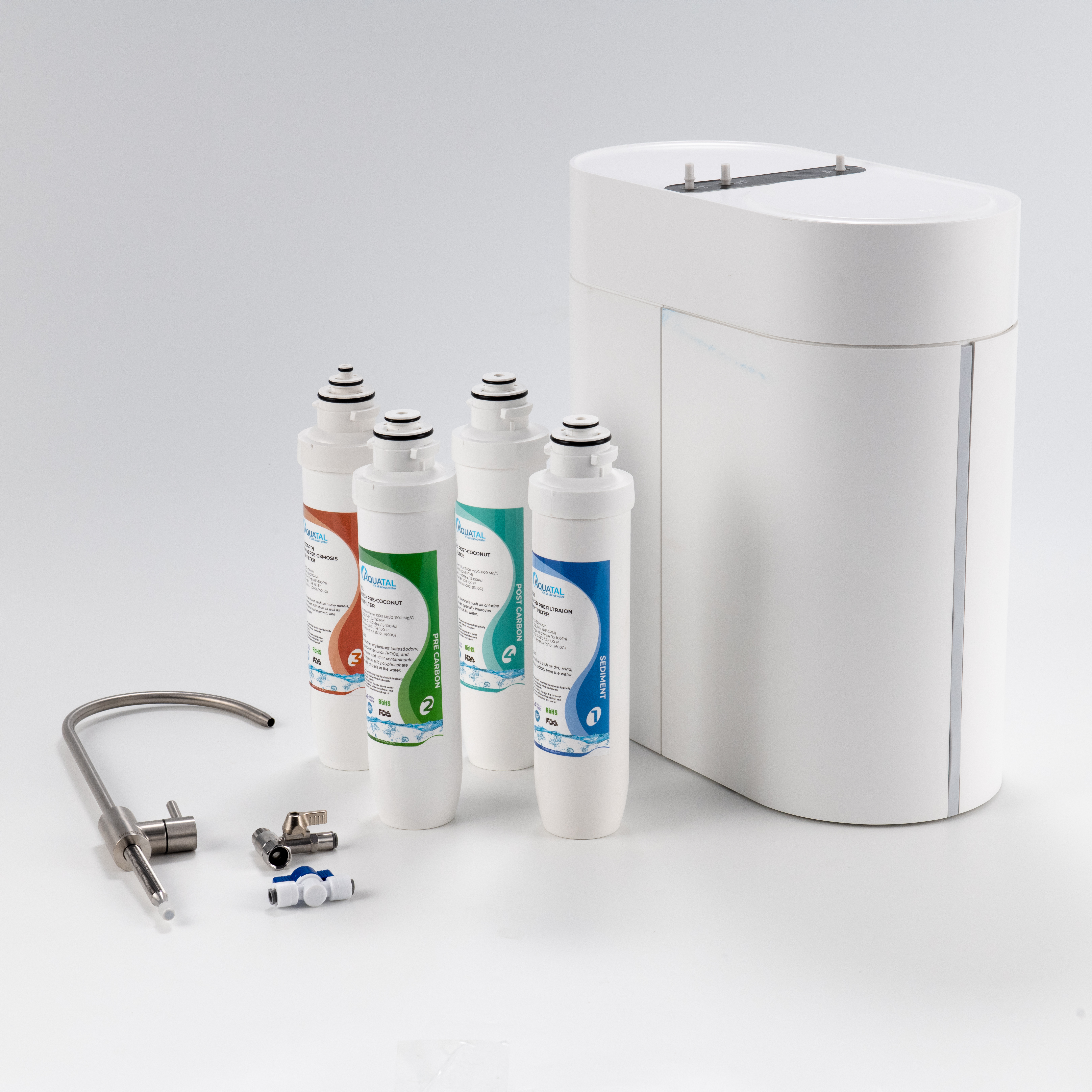 Hey everyone! Ever paused mid-sip from your kitchen tap and wondered, “What’s really in this glass?” Or maybe you’re tired of the faint chlorine taste, the limescale buildup on your kettle, or the endless parade of plastic water bottles? If so, you’re not alone. More and more of us are looking towards home water filtration systems as a solution. But with so many options out there – pitchers, faucet attachments, under-sink units, whole-house behemoths – choosing the right one can feel overwhelming. Let’s break it down!
Hey everyone! Ever paused mid-sip from your kitchen tap and wondered, “What’s really in this glass?” Or maybe you’re tired of the faint chlorine taste, the limescale buildup on your kettle, or the endless parade of plastic water bottles? If so, you’re not alone. More and more of us are looking towards home water filtration systems as a solution. But with so many options out there – pitchers, faucet attachments, under-sink units, whole-house behemoths – choosing the right one can feel overwhelming. Let’s break it down!
Why Filter in the First Place?
While municipal water supplies in many areas are treated to meet safety standards, the journey from the treatment plant to your tap can introduce impurities. Plus, standards vary, and some contaminants (like certain heavy metals, pesticides, or pharmaceutical traces) are harder to remove or aren’t always regulated at levels everyone feels comfortable with. Here’s why filtering makes sense:
Taste & Odor Improvement: Say goodbye to that chlorine taste and smell! Filters significantly improve the palatability of water.
Removing Specific Contaminants: Depending on the filter type, they can target things like lead, mercury, arsenic, pesticides, nitrates, cysts (like Cryptosporidium), and more.
Reducing Sediment & Cloudiness: Filters capture rust, sand, and other particulates.
Softer Water Feel: Some filters reduce minerals causing hardness, leading to less scale and potentially softer skin and hair.
Cost Savings & Eco-Friendliness: Ditch the bottled water habit! Filtered tap water is vastly cheaper and eliminates mountains of plastic waste. It’s a win for your wallet and the planet.
Peace of Mind: Knowing exactly what’s (or what’s not) in your drinking water provides invaluable reassurance.
Filter Types Demystified: Finding Your Fit
Here’s a quick guide to the most common household options:
Pitcher/Carafe Filters:
How they work: Gravity pulls water through a cartridge (usually activated carbon +/- other media).
Pros: Affordable, portable, easy to use, no installation. Great for small households or renters.
Cons: Slow filtration, limited capacity, frequent cartridge changes (monthly-ish), less effective against some contaminants like fluoride or nitrates. Requires fridge space.
Best For: Basic taste/odor/chlorine reduction and light sediment removal. A solid entry point.
Faucet-Mounted Filters:
How they work: Screw directly onto your faucet. Water flows through the attached cartridge when you switch the diverter.
Pros: Relatively affordable, easy DIY installation, good flow rate, convenient on-demand filtered water.
Cons: Can be bulky, may not fit all faucet styles, cartridges need regular replacement, can slightly reduce water pressure.
Best For: Those wanting filtered water directly from the tap without under-sink commitment. Good for general improvement.
Countertop Filters:
How they work: Sit beside your sink, connecting to the faucet via a diverter hose. Often use multiple stages (carbon, ceramic, sometimes RO).
Pros: Higher capacity and often better filtration than pitchers/faucet mounts. No permanent installation. Bypasses under-sink plumbing.
Cons: Takes up counter space, requires manual connection/disconnection (for some), slower than under-sink.
Best For: Renters or those needing better filtration than a pitcher but unable/unwilling to install under-sink.
Under-Sink Filters:
How they work: Installed under the sink, plumbed into the cold water line. Delivers filtered water through a dedicated faucet. Can be simple carbon blocks or multi-stage systems.
Pros: Excellent filtration capability, out of sight, dedicated faucet (often stylish!), good flow rate, longer filter life.
Cons: Requires professional or competent DIY installation, higher upfront cost, uses cabinet space.
Best For: Serious filtration needs, families, those wanting a permanent, high-quality solution. Top choice for comprehensive contaminant removal.
Reverse Osmosis (RO) Systems (often under-sink):
How they work: Forces water through a semi-permeable membrane, removing up to 95-99% of dissolved solids (salts, heavy metals, fluoride, nitrates, etc.). Usually includes pre-filters (carbon/sediment) and a post-filter.
Pros: Gold standard for purity. Removes the widest range of contaminants. Excellent taste.
Cons: Higher cost (purchase & maintenance), slower production rate, produces wastewater (4:1 ratio is common), requires dedicated faucet and under-sink space. Removes beneficial minerals too (some systems add them back).
Best For: Areas with known serious contamination, well water users, or those wanting the purest possible water.
Choosing Wisely: Key Considerations
Before you buy, ask yourself:
What are my main concerns? Taste? Chlorine? Lead? Hardness? Bacteria? Get your water tested (many local utilities offer reports, or use a kit) to know what you’re dealing with. Target your filter to your specific needs.
What’s my budget? Consider both the initial cost and ongoing filter replacement costs.
How much water do I use? A pitcher won’t suffice for a large family.
What’s my living situation? Renters might prefer pitchers, faucet mounts, or countertops.
Am I comfortable with installation? Under-sink and RO require more effort.
Look for Certifications! Reputable filters are independently tested and certified by organizations like NSF International or the Water Quality Association (WQA) against specific contaminant reduction standards (e.g., NSF/ANSI 42 for aesthetics, 53 for health contaminants, 58 for RO). This is crucial – don’t just trust marketing claims.
The Bottom Line
Investing in a water filter is an investment in your health, your taste buds, your wallet, and the environment. There’s no single “best” filter for everyone – the perfect choice depends entirely on your unique water quality, needs, budget, and lifestyle. Do your research, understand what you want to remove, look for those vital certifications, and find the system that brings you confidence with every refreshing glass.
Here’s to clearer, cleaner, and tastier hydration!
What about you? Do you use a water filter? What kind, and what made you choose it? Share your experiences in the comments below!
Post time: Jun-27-2025

